Cucumbers are a popular and useful vegetable that are known for being crunchy and refreshing. They are a great way to stay hydrated and eat healthy because they are low in calories and high in water.
Growing cucumbers in your garden is fun and easy for first-timers. If you want to grow cucumbers successfully, whether in a garden bed or a pot, this article has 10 tips and tricks that will help you get a large, high-quality crop. All season long, enjoy the fruits of your labor.
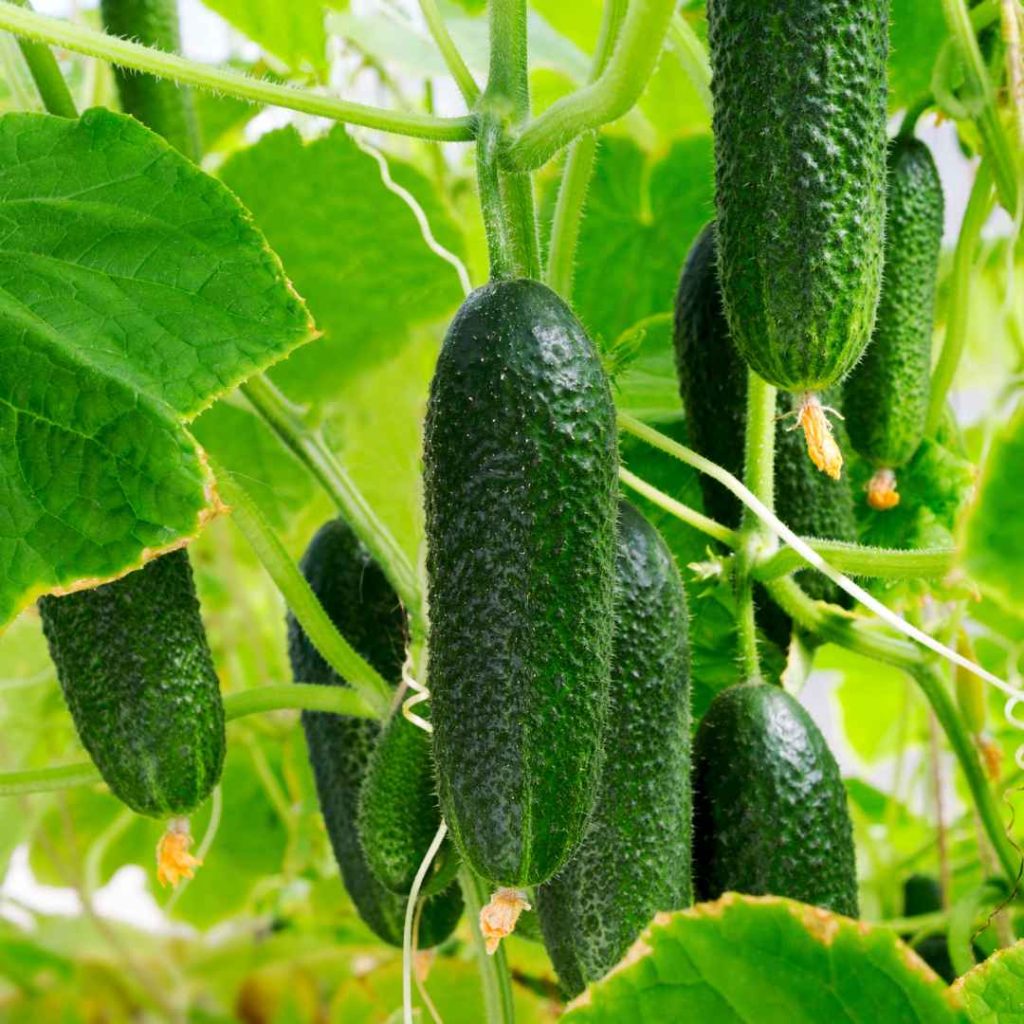
Choosing the Right Variety
There are many types of cucumbers, each with its own flavor and shape. The two main types are slicing cucumbers and pickling cucumbers.
Pickling cucumbers are shorter and thicker than slicing cucumbers. Slicing cucumbers is longer and smoother, so they are great for eating fresh.
It’s important to think about the climate when picking a cucumber variety, since some do better in cooler climates and others do better in warmer, more humid ones. It’s also important to think about space.
Bush or compact varieties like “Bush Pickle” or “Space master” do well in small areas, while vining varieties like “Poinsett” or “Straight Eight” can be trained to grow in large areas.
Another thing to think about is how resistant the cucumber is to common diseases like powdery mildew and mosaic virus. Some varieties have been bred to be disease-resistant.
When choosing cucumbers, people also use their own tastes. Slicing varieties with a mild flavor and thin skin work best for fresh salads and sandwiches. Pickling varieties with firmer flesh and a stronger flavor are better for these dishes.
By carefully picking the right type of cucumber, you can make sure that the growing process goes well and is fun for you, taking into account your gardening needs and preferences.
Soil Preparation
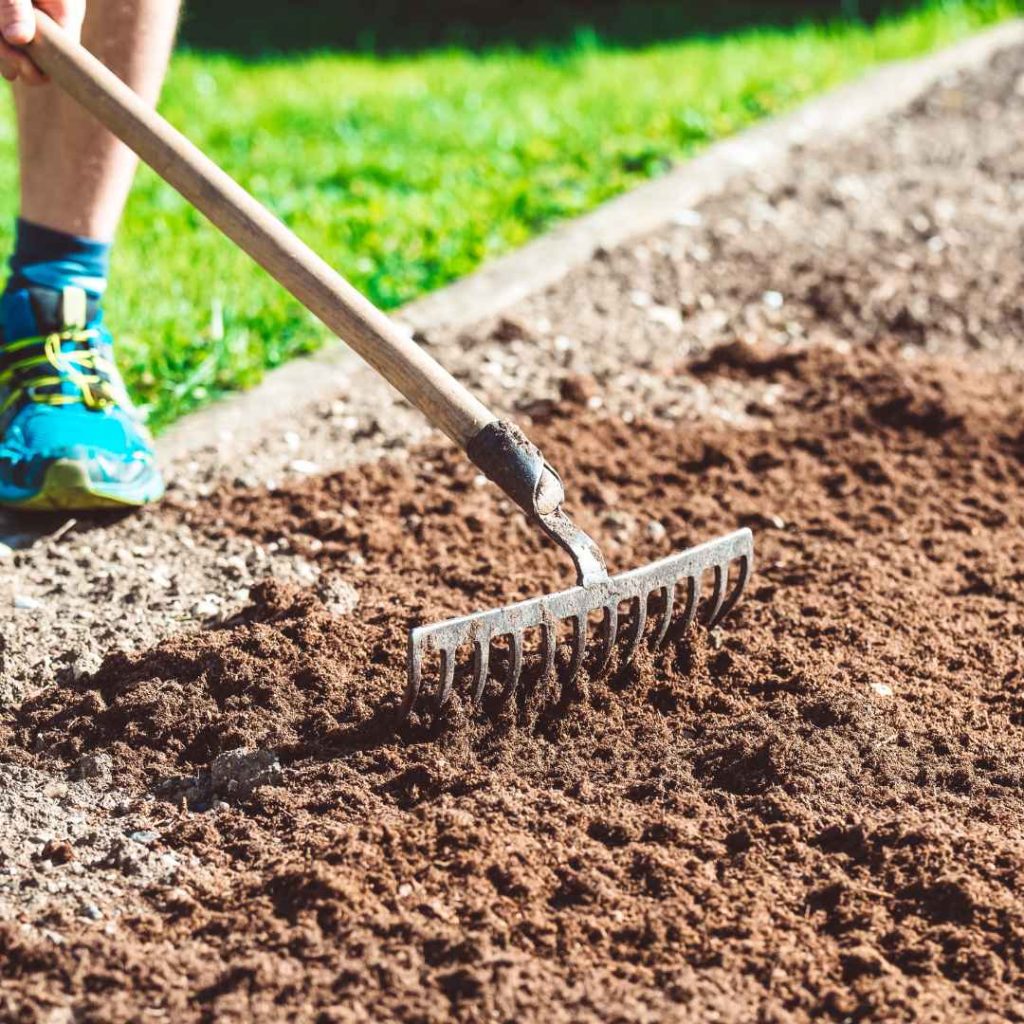
It is important to make sure that the soil is in the right pH range (6.0 to 7.0) before you plant cucumber plants. To do this, you can use a soil pH test kit or send a sample of the soil to an extension service in your area.
If you need to, you can change the pH by adding sulfur, peat moss, organic matter, agricultural lime, or dolomitic lime.
Soil enrichment and composting are very important for cucumber plants because they make the soil more fertile, give it more structure, and keep water in.
You could add coarse sand, perlite, or organic matter to the soil to help it drain better. Cucumbers need a balanced amount of nitrogen, phosphorus, and potassium, so managing their nutrients is very important.
Before planting, fertilizer should be added, and the soil should be tested to see if it is lacking in any nutrients.
When you prepare the soil is very important for planting cucumbers. For summer planting, you should do it early in the fall. Before you plant, make sure the soil is at least 60°F (15°C) warm. Cucumbers don’t like it when the soil is cold.
Putting mulch around cucumber plants can keep the soil moist, keep weeds away, and keep the soil at the right temperature. If you use these tips, your cucumber plants will do better and give you a bigger harvest.
Planting Techniques
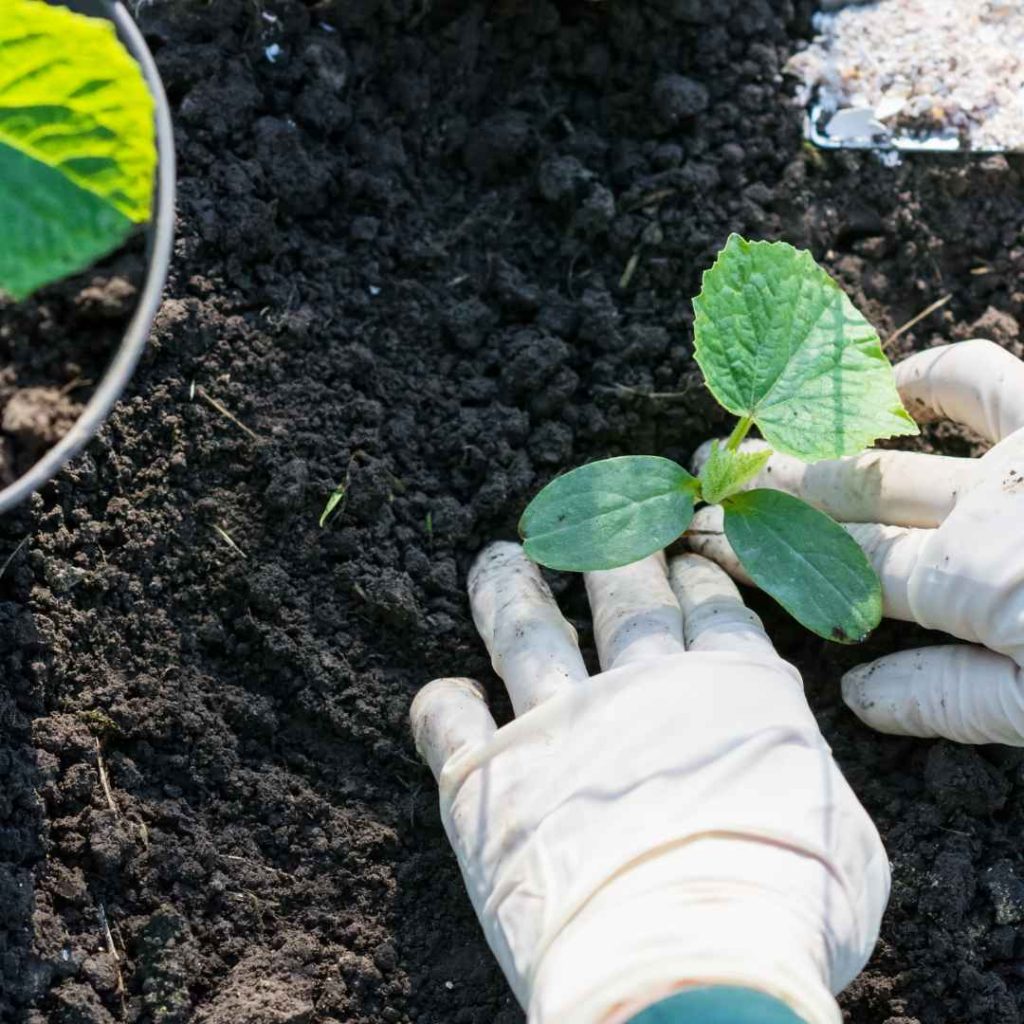
To grow cucumbers, use appropriate planting methods like direct sowing or indoor sowing. Direct sowing allows roots to grow without disturbing them, while indoor sowing helps plants start in shorter growing seasons.
Transplanting young cucumber plants from a nursery is also a convenient method. Be gentle with seedlings and plant them at the same depth as their pots. Cucumbers thrive in warm soil, so plant after frost risk has passed and soil temperature stays above 60°F.
Plant seeds or transplants a week or two after the last frost date in your area. Space vine plants 12-18 inches apart in rows 3-4 feet apart, bush plants 18-24 inches apart, and vining cucumbers about 12 inches apart.
Watering Practices
It is very important to water cucumbers regularly because they need a lot of water to grow. If you don’t water your plants regularly, problems can happen, like fruit that tastes bitter or doesn’t grow well.
It’s especially important to water cucumbers regularly when they are flowering and fruiting because they are growing quickly and not getting enough water can have a big effect on yield and quality.
Deep watering, drip irrigation, and mulching are all ways to make sure plants get enough water. Deep watering helps roots grow deeper, and drip irrigation sends water directly to the root zone, so less water is wasted and there is less chance of disease.
Mulching helps keep the soil moist, keeps the temperature stable, and makes it harder for weeds to grow. Make sure the soil drains well and watch for signs of too much watering, like leaves turning yellow, wilting, or soil that feels too wet.
The best time to water cucumbers is in the morning, before it gets too hot, so the plants can soak up the water and less of it evaporates.
Fertilization
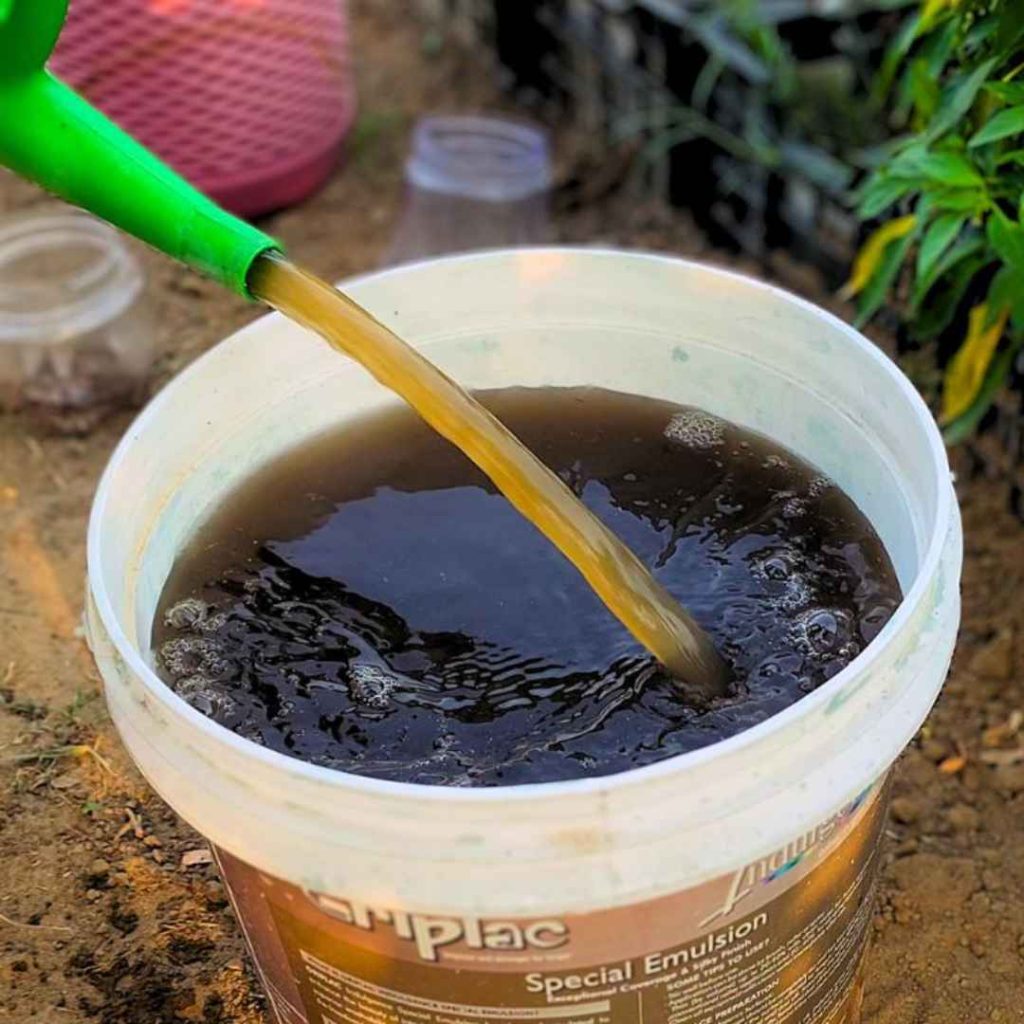
During all stages of their growth, cucumbers need a balanced supply of nutrients. These include micronutrients like iron, manganese, zinc, copper, molybdenum, and boron, as well as primary nutrients like nitrogen, phosphorus, potassium, calcium, magnesium, and sulfur.
Cucumbers should be fertilized with both natural and man-made fertilizers. Natural fertilizers like compost, bone meal, fish emulsion, blood meal, and kelp meal offer a balanced mix of nutrients.
There are balanced formulas, high-phosphorus fertilizers, liquid fertilizers, and slow-release granules in synthetic fertilizers.
Some application tips are to prepare the soil first, add a side dressing, feed the leaves, and avoid giving too much fertilizer. Organic fertilizers are better for the soil and the environment, but they may release nutrients more slowly.
Synthetic fertilizers deliver nutrients quickly and precisely, but they should be used carefully so that they don’t hurt plants and soil organisms. Testing the soil often can help you fine-tune how you fertilize cucumbers.
Mulching
Mulching is a crucial aspect of gardening, promoting plant growth and soil health. It helps maintain water levels, reduces watering frequency, prevents weed growth, maintains soil temperature, improves soil health, and prevents soil erosion.
Mulch can be found in various forms, including organic and inorganic options. Organic mulches, like straw or hay, shredded leaves, grass clippings, and compost, are easy to use. Inorganic mulches, like plastic sheeting and landscape fabric, can keep the soil warm and moist but may need to be changed or removed.
To apply mulch, clear the area and spread it evenly. Regular checks on the mulch during the growing season are essential. Selecting the right mulch and ensuring proper application can lead to healthier cucumber plants and improved harvests.
Supporting the Vines
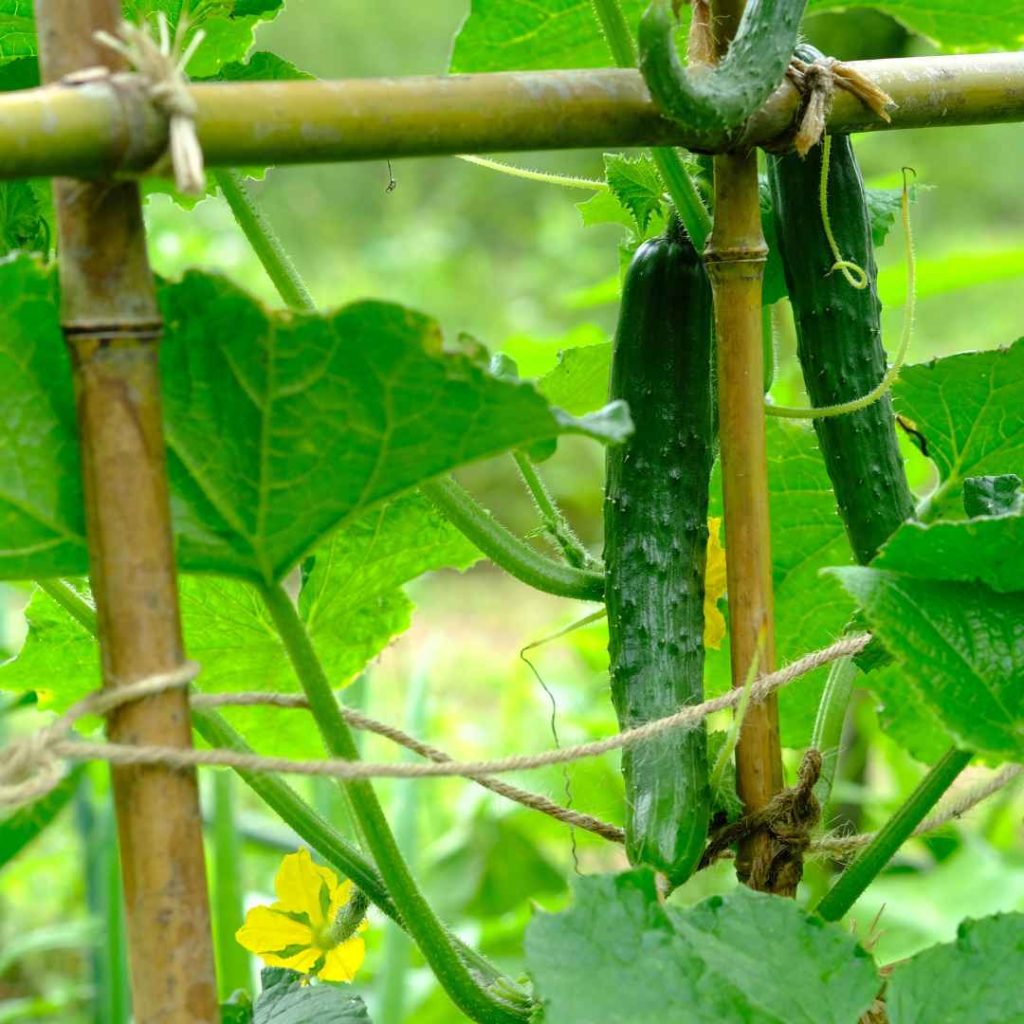
Supporting cucumber vines in your garden makes the most of the space you have, lets more air flow through, and makes the plants healthier. It lets plants grow, lowers the risk of disease, makes cucumbers easier to pick, and lowers the number of pests that can damage them.
Trellising, wire cages, arbors, and pergolas are all ways to support cucumber vines. To train vines, you have to gently move them toward the support structure, cut off any extra growth, and keep an eye on how stable they are.
Taking care of the plant regularly means getting rid of dead or damaged leaves and looking for signs of disease or pests. This not only makes the plants healthier and more productive, but it also makes the garden easier to care for and look better.
Related: 12 Best Trellis For Cucumber
Pest and Disease Management
Cucumbers are susceptible to various pests and diseases, affecting their growth and yield. To manage these issues effectively, early detection and appropriate control methods are crucial.
Common pests include aphids, cucumber beetles, spider mites, whiteflies, squash bugs, powdery mildew, downy mildew, bacterial wilting, the cucumber mosaic virus (CMV), and anthracnose.
Organic and chemical methods, along with crop rotation, good hygiene, and regular checks, can be used. Natural methods include insecticidal soap or neem oil, introducing natural predators like ladybugs or lacewings, and broad-spectrum insecticides.
Chemical methods like spraying matricide-containing soaps or neem oil, humidifying the air, and using labeled matricides are also effective. Preventative measures and resistant varieties can ensure a healthy and productive cucumber crop.
Harvesting Tips
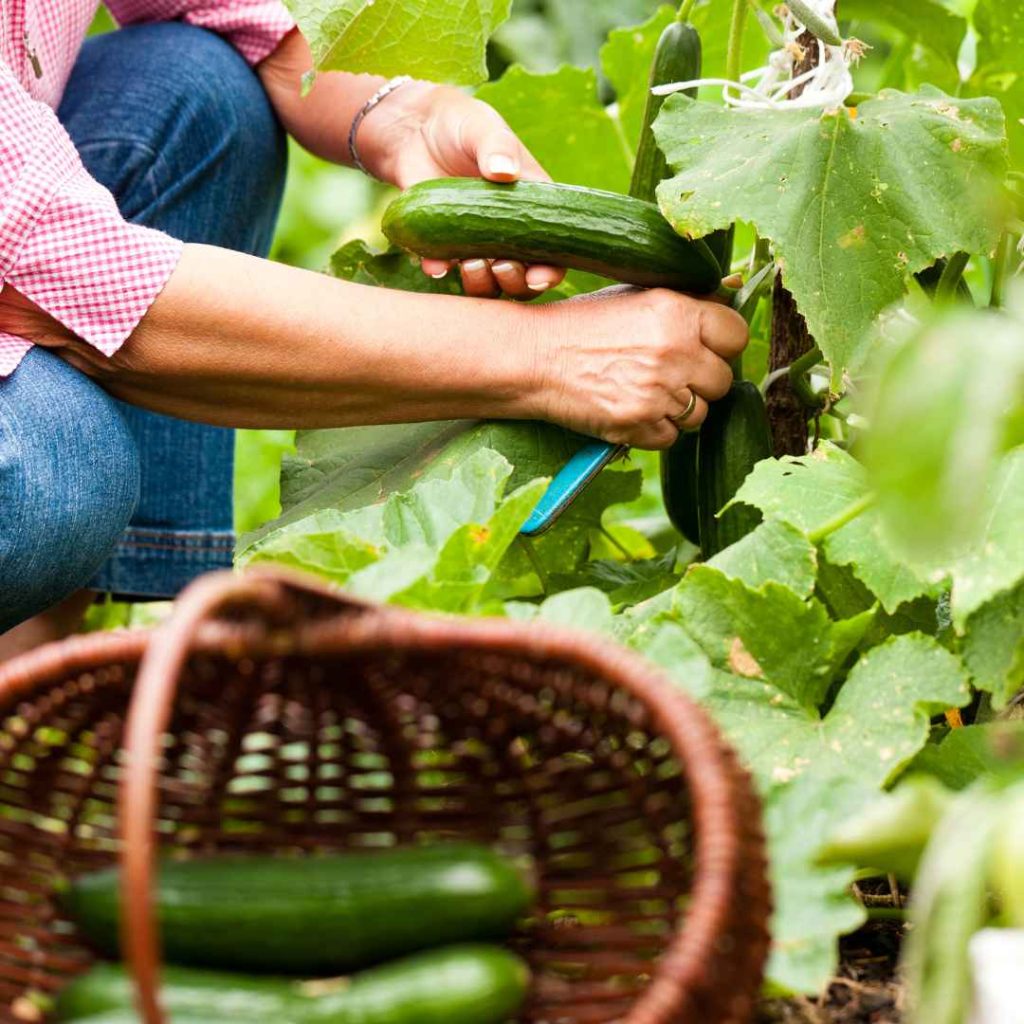
If you harvest your cucumbers the right way and use the right methods, you can get a much better quality and quantity crop. Size and shape, color, texture, and seed development are all signs that a crop is ready to be picked. To keep cucumbers from getting hurt and from being pulled, use sharp tools like pruning shears or garden scissors.
To make the fruit last longer, cut the stem off about 1/4 to 1/2 inch above the fruit. Be careful not to bruise or squeeze cucumbers when you handle them.
Regularly pick cucumbers, especially when they are growing the most, to keep the plants growing and keep them from getting too ripe. Watch how the cucumbers grow and pick them when they are the best size for quality.
After being picked, cucumbers should be cooled quickly to keep them fresh, and then they should be put in the crisper drawer of the fridge. By knowing these signs and pickling cucumbers the right way, you can enjoy fresh, high-quality cucumbers and get the most out of your gardening efforts.
Storage and Preservation
Follow these steps for storing and preserving cucumbers to keep them fresh and extend their shelf life. Keep cucumbers at 45–50°F (7–10°C) and in the crisper drawer of your fridge to keep the humidity at the right level.
Do not store them in cold places to keep them from getting damaged or going bad. Boise cucumbers in a cool, dry place out of direct sunlight until ready to use. Be careful not to bruise cucumbers when you handle them.
To pickle cucumbers, wash them well, cut off the ends, and make a brine solution with vinegar, water, salt, and any spices you want. Before putting cucumbers away, make sure the jars are clean and put them in a boiling water bath. After that, let the cucumbers cool completely.
To keep the texture of cucumbers, freeze them for a short time and then use them in cooked dishes. To store food for a long time without canning, marinate cucumbers in a brine that is similar to the brine used for traditional pickles. Pickles that are kept in the fridge usually last for a few weeks.
